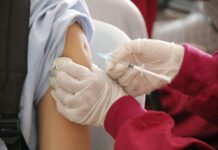CANCER survival rates in Limerick and the Mid West are lower than the national average with survival rates for those suffering from lung cancer standing almost seven per cent lower.
Figures from a National Cancer Registry report for the years 2014-2018 (the latest available), revealed to a member of the Health Forum West, show that the national average survival rate for people diagnosed with lung cancer is 24.3 per cent, almost one in four, while in the Mid West the rate is 17.4 per cent, or less than one in two.
Cllr Mary Howard (FG), a Clare member of the Forum had asked for the figures relating to cancer survival in Limerick and Clare.
The reply included survival figures for colorectal cancer at 64.4 per cent in the region, 1.5 per cent less than the national average, and for breast cancer, which has an 81.6 per cent survival rate in the region, 6.6 per cent less than the national average.
Answering the Councillor’s question, CEO of University Hospital Limerick, Colette Cowan said it is “important to note that the data applies to patients treated up until 2018 only”.
The Cancer Inequalities Report for Ireland 2004-2018, from which the data was taken, measures differences in cancer incidence, five-year survival and stage at presentation between populations living in the most and least deprived areas in Ireland between 2014-2018.
The CEO said: “The Deloitte Report on Patient Flow published by UL Hospitals Group last year sets out a number of demographic factors that are driving demand for unscheduled care in our region.”
“This includes a population that is older than average and a population that contains high pockets of social deprivation around Limerick City. Similar demographic factors influence demand for cancer services.
“A range of potential factors contribute to disparities across the cancer continuum, including differences in general health, exposure to particular risk factors, health-seeking behaviour (i.e. awareness of symptoms, participation in screening and presentation at GP services, influencing early detection), access to healthcare, or other factors that may be linked to socioeconomic or geographic factors.”











